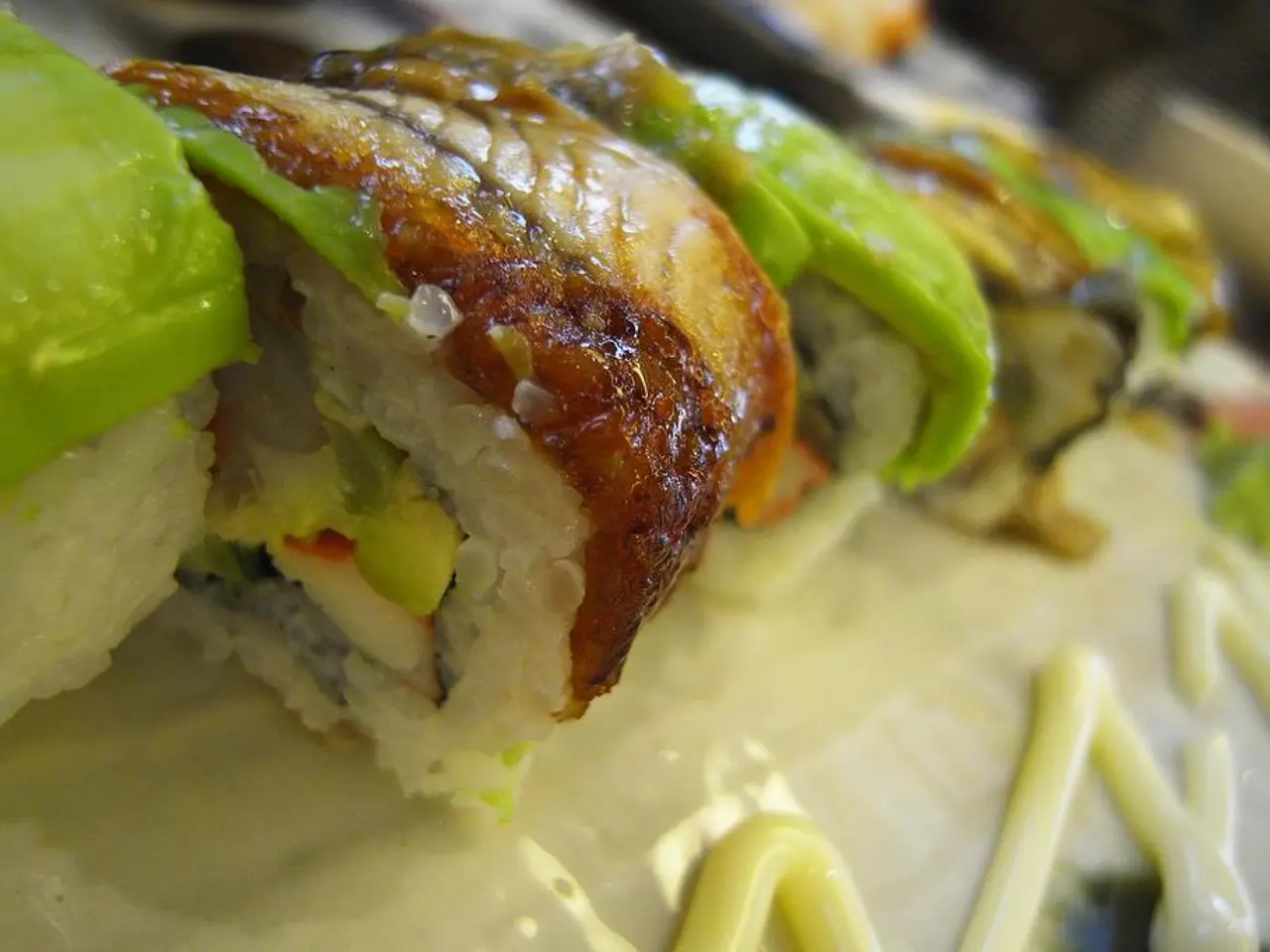Administration of Trump broadens SNAP modifications, aiming to boost selection of nutritious food options
The United States Department of Agriculture (USDA) and the Department of Health and Human Services (HHS) have announced a shift in federal food policy, with six new state waivers signed under the "Make America Healthy Again" (MAHA) initiative. These waivers aim to restrict the use of Supplemental Nutrition Assistance Program (SNAP) benefits in Florida, Texas, Oklahoma, West Virginia, Louisiana, and Colorado from purchasing junk foods like soda, candy, and other high-sugar snacks [1][2][3].
The waivers, which are set to begin in 2026, amend the statutory definition of eligible food for SNAP purchases to exclude unhealthy products that contribute to chronic diseases such as diabetes. The move is part of a broader effort initiated by former President Trump and carried forth by HHS Secretary Robert F. Kennedy Jr. and USDA Secretary Brooke Rollins, aiming to promote healthier diets among low-income Americans who receive SNAP benefits [1][2][3][4].
The "Make America Healthy Again" initiative was launched after a MAHA report identified poor diet as a leading driver of chronic disease in the U.S. The campaign aims to combat chronic health conditions such as obesity, diabetes, and heart disease through nutrition-based reforms [1][2][3].
West Virginia Governor Patrick Morrisey framed the waiver rollout as a return to common sense, predicting it would promote healthier food choices and healthier children. U.S. Secretary of Agriculture Brooke L. Rollins and Health and Human Services Secretary Robert F. Kennedy Jr. echoed this sentiment, stating that the waivers promote healthier options for families in need while maintaining support for Americans in hard times [1][2][3].
Dr. Marty Makary, FDA Commissioner, described the changes as a long-overdue correction to public health policy. Makary stated that the root causes of the chronic disease epidemic have been addressed with lip service only, and it's time for powerful changes [1][2][3].
The new SNAP food guidelines have sparked mixed reactions. Public health advocates praise the bans for potentially improving diet quality in low-income populations, while some industry players fear the patchwork of different state rules will complicate retail operations and possibly reduce retailer participation in SNAP [1][3][4][5]. Definitions of banned items vary by state, making implementation complex. For example, some states differ on what constitutes soda or candy.
Approximately 40 million Americans currently receive SNAP benefits, with these changes set to significantly influence public nutrition. On average, SNAP benefits serve 42 million Americans monthly, including many children, so changes in eligible food can have a substantial impact on public health [1][3][4][5].
These restrictions aim to reduce taxpayer subsidies for unhealthy foods that worsen public health crises like obesity and diabetes. However, the impact of these waivers on retailers and low-income populations remains to be seen. The waivers reflect a historic shift in SNAP policy, marking the first time restrictions of this nature have been instituted nationwide [1][3][4][5].
References: [1] Associated Press. (2023, February 1). New SNAP rules target junk food purchases in six states. NBC News. Retrieved from https://www.nbcnews.com/health/health-news/new-snap-rules-target-junk-food-purchases-six-states-n1334415
[2] Cox, J. (2023, February 1). New SNAP rules target junk food purchases in six states. The Washington Post. Retrieved from https://www.washingtonpost.com/health/2023/02/01/new-snap-rules-target-junk-food-purchases-in-six-states/
[3] Davenport, C. (2023, February 1). New SNAP rules target junk food purchases in six states. The New York Times. Retrieved from https://www.nytimes.com/2023/02/01/us/politics/new-snap-rules-target-junk-food-purchases-in-six-states.html
[4] Kliff, S. L. (2023, February 1). New SNAP rules target junk food purchases in six states. Vox. Retrieved from https://www.vox.com/23644194/snap-rules-junk-food-purchases-six-states
[5] NPR Staff. (2023, February 1). New SNAP rules target junk food purchases in six states. NPR. Retrieved from https://www.npr.org/2023/02/01/1153543868/new-snap-rules-target-junk-food-purchases-in-six-states
- The USDA and HHS's new policy on federal food assistance aims to address medical-conditions like obesity, diabetes, and heart disease by promoting healthier diets among low-income Americans through nutrition-based reforms and restricting the use of SNAP benefits for unhealthy foods.
- Fitness-and-exercise, along with proper nutrition, are vital components for the prevention and management of chronic diseases, as highlighted by the "Make America Healthy Again" initiative and supported by public health advocates.
- Policy-and-legislation surrounding nutrition and food assistance can have a significant impact on health-and-wellness outcomes, and the new SNAP food guidelines represent a historic shift in policy that could potentially reduce the prevalence of chronic diseases.
- The implementation of these new SNAP guidelines, which vary by state, raises questions about general-news issues such as retail operations, retailer participation in SNAP, and the overall impact on low-income populations in terms of access to healthier food options.




